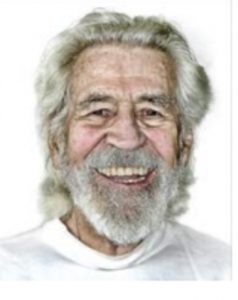By Jack Cumming
Doug Richie is a Quaker, a Friend in every sense of that word. He was also instrumental in trying to persuade the Kendal Corporation to open a Continuing Care Retirement Community on the west coast. There was excess land next to the Veterans Administration Hospital in Long Beach, California. Doug persuaded the administrator that a CCRC targeting vets and operating with Quaker principles was a positive use for the space. That venture did not work out. But Doug and his wife, Annie, had caught the CCRC bug, and that leads to a story that will interest regular Senior Living Foresight readers.
An Intimate Story
Doug has just published a fascinating, intimate, and wonderfully upbeat account of his sixteen-plus years living at Carlsbad by the Sea Retirement Community in Carlsbad, CA. There is no one about whom Doug doesn’t have something positive to share. And he shares those positive encounters that have marked his CCRC journey in this small, 101-page volume recounting his life while there. Doug, who was born in 1928, is now 92 years old with all that suggests. He shares his acceptance that the end of his days may be near. That sense of the nearing conclusion of life colors the subtitle of the book, “Life in the Old Folks Home: Where the Elderly Go To Die”.
Doug tells the story of how he and Annie accumulated their wealth; how they hoped to donate it for the Long Beach CCRC; how Annie’s parents had benefitted from living at Foulkeways, an early CCRC model community developed by the Philadelphia Yearly Meeting of Friends; how they chose a CCRC for themselves; and what it was like to move in. That’s just the beginning.
Lessons for Marketing, Life Enrichment, and More
Doug’s story of how he and his wife decided on Carlsbad by the Sea as their future home is instructive for salespeople wanting to understand the buyer’s mind. He then describes what was done after move-in so they felt welcomed. This, too, is central to sales since a reputation as a welcoming community gives a huge advantage.
Doug thoroughly describes the communal activities that engaged him. Anyone wanting to improve life enrichment as an attraction for a CCRC should read this carefully. What I found particularly interesting was how many of these activities were initiated and led by residents without any staff involvement. Doug’s account of what these activities meant for him shows how empowering such an approach can be.
Perhaps, most candidly and most intriguingly, Doug delves into story vignettes of both key staff members and prominent residents. By way of full disclosure, I should share at this point that I, myself, have also lived for the past fourteen years with my wife, Valerie, at Carlsbad by the Sea Retirement Community. Thus, my wife and I also know the people whom Doug profiles in this account. That makes it very personal.
Still, I suspect that the affluent and accomplished residents of our CCRC are not that different from residents elsewhere. It takes wealth to be able to afford this lifestyle, at least as it is now constituted. So it’s not surprising that many of the residents have led noteworthy lives. They bring that sense of purpose and knowledge to their residency in a CCRC. There are many tales in Doug’s book of residents helping and supporting one another. That is the core strength of the Carlsbad by the Sea Retirement Community.
Practical Lessons
You may be wondering how reading of life in just one CCRC might help you to be better in your job no matter what it might be. First, we can note that anyone who has worked for more than one company knows that the lessons learned from one inform the experience of working for another. Reading this in-depth, intimate story of Carlsbad by the Sea Retirement Community can give you that kind of experience.
Second though, and most importantly, this is a human story. And it explains as anything less human in its content cannot, the joys and positives of congregate living. William Carlos Williams, the poet, believed that in the human stories of any single community, we could find the universals that govern all humankind. This is that kind of book. It is intimate; it is unique; it is universal.
If you have ever wondered how residents view the positive benefits of congregate living, especially as they approach the end, then this is a book you should read. More importantly, it’s a book you should keep at hand and delve into when you need inspiration for your work. Like any self-published book without an editor, there are minor glitches that don’t distract from the story. And, despite its somewhat off-putting subtitle, it’s also a volume that sells congregate living to prospects who are undecided. Click here to purchase from Amazon.
Click here to read comments and join the conversation about this article.









